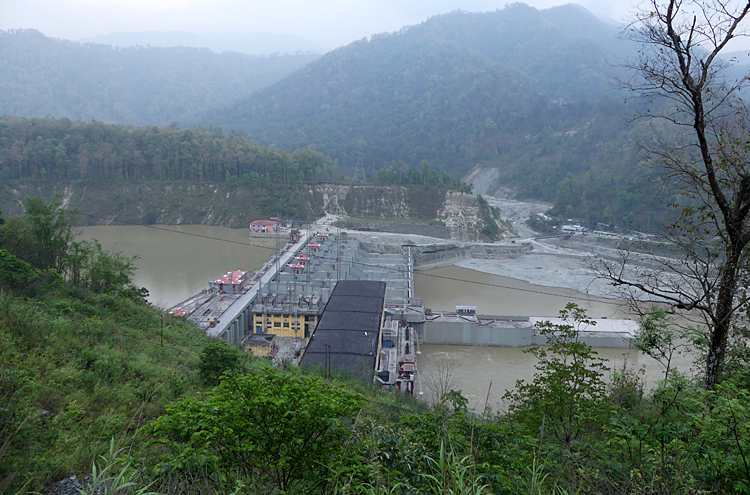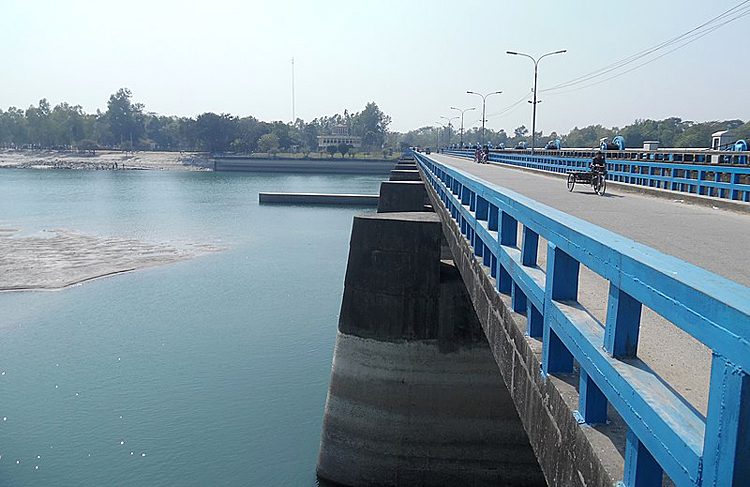INDIAN ARMED FORCES CHIEFS ON OUR RELENTLESS AND FOCUSED PUBLISHING EFFORTS

The insightful articles, inspiring narrations and analytical perspectives presented by the Editorial Team, establish an alluring connect with the reader. My compliments and best wishes to SP Guide Publications.

"Over the past 60 years, the growth of SP Guide Publications has mirrored the rising stature of Indian Navy. Its well-researched and informative magazines on Defence and Aerospace sector have served to shape an educated opinion of our military personnel, policy makers and the public alike. I wish SP's Publication team continued success, fair winds and following seas in all future endeavour!"

Since, its inception in 1964, SP Guide Publications has consistently demonstrated commitment to high-quality journalism in the aerospace and defence sectors, earning a well-deserved reputation as Asia's largest media house in this domain. I wish SP Guide Publications continued success in its pursuit of excellence.
- Operation Sindoor: Resolute yet Restrained
- India’s Operation Sindoor Sends a Clear Message to Terror and the World – ‘ZERO TOLERANCE’
- Japan and India set forth a defence cooperation consultancy framework, talks on tank and jet engines
- Terrorist Attack in Pahalgam in Kashmir: Unfolding a long surgical war against PAK
- Lt General Pratik Sharma takes over Command of Indian Army's Northern Command
China's Teesta Project
The Yunus-led interim government in Bangladesh is 'manufacturing' consent of locals along the Teesta River to arouse anti-India slogans, facilitating the project to be awarded to China
 |
The Author is Former Director General of Information Systems and A Special Forces Veteran, Indian Army |

The Teesta River originates from Sikkim and enters Bangladesh after covering about 305 km in the Himalayan state and parts of north Bengal. In India, the last downstream barrage over Teesta River is at Gajoldoba in Jalpaiguri District (about 25 km from Siliguri), from where water is released downstream, flowing through Jalpaiguri and parts of the Cooch Behar District, before entering Bangladesh. Since long, Bangladesh has been demanding fair share of Teesta River waters, but an India-Bangladesh River Sharing Accord remained elusive - stuck since 2011 because of opposition from Bengal Chief Minister Mamata Banerjee. It was but natural for China to step in and take advantage; Beijing proposed a Teesta Barrage Project in Bangladesh four years ago.
Since long, Bangladesh has been demanding fair share of Teesta River waters, but an India-Bangladesh River Sharing Accord remained elusive – stuck since 2011 because of opposition from Bengal Chief Minister
India also came up with a similar proposal to the then Bangladeshi Prime Minister Sheikh Hasina when she visited New Delhi in June 2024. During her visit, it was decided that India would send a technical team to Dhaka for talks on the conservation and management of the river. Hasina, who visited China in July after her New Delhi trip, had said she would give preference to India as the river originates from this country.
But then a CIA-backed coup in Bangladesh led to Shieh Hasina resigning and regime change in Dhaka. Under Mohammad Yunus, Advisor to the Interim Government of Bangladesh, the country is in the throes of Islamic radicalisation with minorities (primarily Hindus) under attack. Within a week of regime change in Dhaka, an FBI team visited Dhaka, following which Bangladesh Army Chief General Waker-Uz-Zaman toured the US on Pentagon's invitation. This was followed by the US-Bangladesh bilateral defence dialogue.
Under Mohammad Yunus, Advisor to the Interim Government of Bangladesh, the country is in the throes of Islamic radicalisation with minorities (primarily Hindus) under attack
Yunus has admitted that storming of Prime Minister Sheikh Hasina's residence was planned in advance with the Islami Chhatra Shibir, student wing of the radical Jamaat-i-Islami, providing the muscle for the violent uprising, as also looting of security personnel's and government armouries. On December 3, 2024, a 14-member team of leaders of Bangladesh's Islamist parties, led by Jamaat-e-Islami's Syed Abdullah Mohammad Taher (an anti-India hardliner) visited China on Beijing's invitation. Earlier in November 2024, Chinese Ambassador to Bangladesh Yao Wen hosted a reception for the Islamist parties in Dhaka, where he said, "Regardless of changes in domestic or regional circumstances, the China-Bangladesh relationship has remained steadfast, progressing steadily in the right direction."

The ISI is back in strength in Bangladesh and radical-terrorist leaders from Pakistan and Bangladesh, as also military delegations, are visiting each other's country. Bangladesh has resumed bilateral trade with Pakistan, and China and Pakistan are both supplying arms, ammunition and explosives to Bangladesh. The Pakistani army has commenced training the Bangladesh army in four cantonments of the Bangladesh army.
The ISI is back in strength in Bangladesh and radical-terrorist leaders from Pakistan and Bangladesh, as also military delegations, are visiting each other's country
It is, therefore, no surprise that Dhaka has renewed a Memorandum of Understanding (MoU) with China's state-run PowerChina of the nearly $1 billion project, to come up near India's vulnerable 'chickens' neck'. PowerChina Project in Bangladesh includes constructing, expanding, upgrading, and renovating nearly 100 substations, over 1,000 kilometers of transmission lines at 400 kilovolts, 230 kV, and 132 kV levels, and seven regional inspection and maintenance centers within the Bangladesh Power Grid Company's jurisdiction.
The Bangladesh Nationalist Party (BNP) has been holding protests for the multipurpose project on the conservation and management of the Teesta River to China. The Yunus-led interim government in Bangladesh is "manufacturing" consent of locals along the Teesta River to arouse anti-India slogans, facilitating the project to be awarded to China. On February 9, the administration of Rangpur District in north Bangladesh, held a public hearing at Kawnia about what to do with Teesta River. According to the Bangladeshi media, hundreds of people living in districts like Rangpur, Lalmonirhat, Gaibandha, Kurigram and Nilphamari (which are along the banks of the Teesta) attended the public hearing, narrating their plight because of the drying up of Teesta in lean periods, blaming India for not releasing adequate water, and floods during the monsoon months because India releases more water.
Of serious concern to India is that Bangladesh's Multipurpose Teesta Project, as well as the PowerChina project, are coming up close to the Chickens' Neck area
Syeda Rizwana Hasan, Advisor to the Bangladesh Ministry of Environment, Forest, Climate Change and Water Resources, addressing the gathering said, "The Indian government should inform the authorities in Bangladesh a few hours before opening the dam on the Teesta during monsoon months. The Chinese government had earlier come up with a master plan for the conservation and management of the river. We are communicating with them and they have asked for two years for it. We have agreed to give them two years and added a condition that the master plan has to be drawn up after seeking the opinion of people who live on the banks of Teesta. The second condition is that the $1 billion project, involving dredging of the river, construction of reservoirs, a drainage system along the river and construction of embankments and satellite townships on either bank of the Teesta, should be finalised by December 2025."
Of serious concern to India is that Bangladesh's Multipurpose Teesta Project, as well as the PowerChina project are coming up close to the Chickens' Neck area. This also must be viewed in conjunction with the visit of senior officers of Pakistan's ISI to the Rangpur District of Bangladesh after spending time at Dhaka. Also, few years back, Nepal gave oil mining rights to a Chinese company in the Terai region of Nepal, while India's ONGC was also a contender. Chinese projects abroad always have a complement of the PLA in disguise. Therefore, we should expect a PLA presence in the Terai region of Nepal, as well as in north Bangladesh.





